
Lower Navarre is a traditional region of the present-day French département of Pyrénées-Atlantiques. It corresponds to the northernmost merindad of the Kingdom of Navarre during the Middle Ages. After the Spanish conquest of Iberian Navarre (1512–24), this merindad was restored to the rule of the native king, Henry II. Its capitals were Saint-Jean-Pied-de-Port and Saint-Palais. In the extreme north there was the little sovereign Principality of Bidache, with an area of 1,284 km2 (496 sq mi) and a decreasing population of 44,450, 25,356.

Philibert, Count de Gramont, was a French courtier and soldier, known as the protagonist of the Mémoires written by Anthony Hamilton. He was a younger half-brother of Antoine III of Gramont and uncle of Catherine Charlotte de Gramont, princess of Monaco.
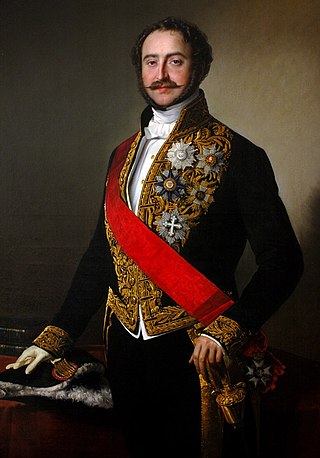
Antoine Alfred Agénor, 10th Duc de Gramont, Prince de Bidache was a French diplomat and statesman.

The House of Gramont is the name of an old French noble family, whose name is connected to the castle of Gramont Basque province of Lower Navarre, France.
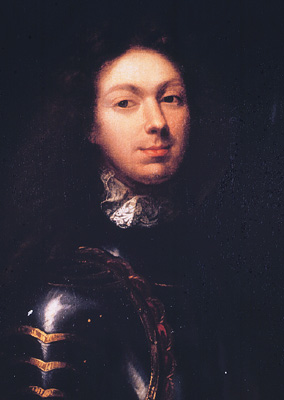
Antoine V de Gramont, Duke of Guiche, was a Marshal of France.
Arancou is a commune in the Pyrénées-Atlantiques department in southwestern France.

Sames is a commune in the Pyrénées-Atlantiques department in southwestern France. It is considered part of the Basque Country province of Lower Navarre.
The title of Duke of Gramont is a French dukedom and former peerage. It was created in 1648 for French Marshal Antoine III de Gramont.

Antoine III Agénor de Gramont, Duke of Gramont,comte de Guiche,comte de Gramont,comte de Louvigny,Souverain de Bidache was a French military commander and diplomat. He served as Marshal of France from 1641, Viceroy of Navarre and Béarn, and Governor of Bayonne.

Catherine of Bourbon was a Navarrese regent princess. She was the daughter of Queen Joan III and King Anthony of Navarre. She ruled the principality of Béarn in the name of her brother, King Henry III of Navarre, from 1576 until 1596.

Antoine Charles IV de Gramont, comte de Guiche, 3rd Duke de Gramont,comte de Louvigny,Souverain de Bidache was a French diplomat.
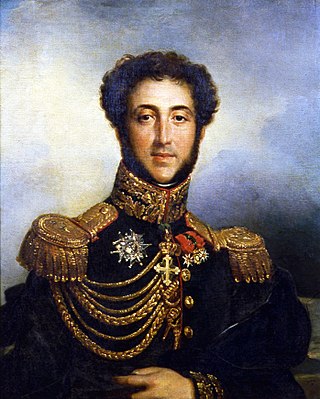
Antoine IX Geneviève Héraclius Agénor de Gramont, 9th Duke of Gramont, Duke of Guiche, Prince of Bidache, etc. was a 19th-century French aristocratic Army general and courtier.

Jeanne d'Albret, also known as Jeanne III, was Queen of Navarre from 1555 to 1572.
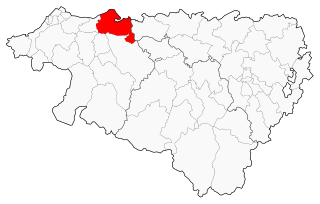
The Principality of Bidache was from 1570 to 1793 a small feudal state in the south west of modern-day France. The sovereignty of Bidache was proclaimed by Count Antoine de Gramont in 1570. The counts of Gramont had formerly been vassals of the King of Navarre however they had last paid tribute in 1434 and considered themselves relieved of their fealty. The principality maintained de jure sovereignty until 1790 when by royal edict the territory of the principality was declared to be a part of France by Louis XVI. In 1793 the principality was occupied by troops loyal to the First French Republic and the last reigning prince, Antoine VII, was ousted. The royal and noble Gramont dynasty survives to the present day.
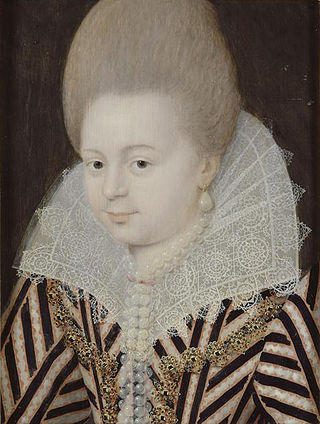
Diane d'Andoins or d'Andouins was born in Hagetmau in the fall of 1554, and died there in February 1621. The Countess of Guiche, and called "the beautiful Corisande", she was known for having been a royal mistress of King Henri III of Navarre between 1582 and 1591.
Jean de Forcade,, was a Fermier des monnaies de Béarn et Navarre.
Jean de Laforcade, Seigneur de La Fitte-Juson, aka Jean de Laforcade, Seigneur de La Fitte-Suzon (sic), aka Jean de La Forcade, aka Jean de La Fourcade, aka Jean de la Fourcade, aka Jean de Lafourcade, aka Jean de Laforcade, aka Jean de Fourcade, was the son of Protestant nobleman Jean de Laforcade, Seigneur de La Fitte, and a descendant of the noble family of Forcade of Béarn in Navarre.
Jean de Laforcade, Seigneur de La Fitte, aka Jean Laforcade, Seigneur de Lafitte, aka Jean Lafourcade, aka Jean II. de Forcade, was a Protestant nobleman and a descendant of the noble family of Forcade of Béarn in Navarre.
The Chambres des Comptes de Navarre, alias Cour des Comptes de Navarre(English: Court of Auditors of Navarre), was formed in April 1624 during the reign of Louis XIII through the act of merging the Chambre des Comptes of Pau with the Chambre des Comptes of Nérac into one entity. In 1691, it was merged into the Parliament of Navarre and Béarn in Pau. The First President and the two Presidents, became Président à mortiers in the Parliament.
When the Kingdom of Navarre was united with France by the marriage of Philip IV of France with Joan I Queen Regnant of Navarre and Countess of Champagne on 16 August 1284, it kept the long existing Chancery of Navarre(French: Chancellerie de Navarre). The Kings of Navarre had private Chancellors dating back to ancient kings. Theobald II of Navarre had a Vice-Chancellor, according to letters dated 1259.














